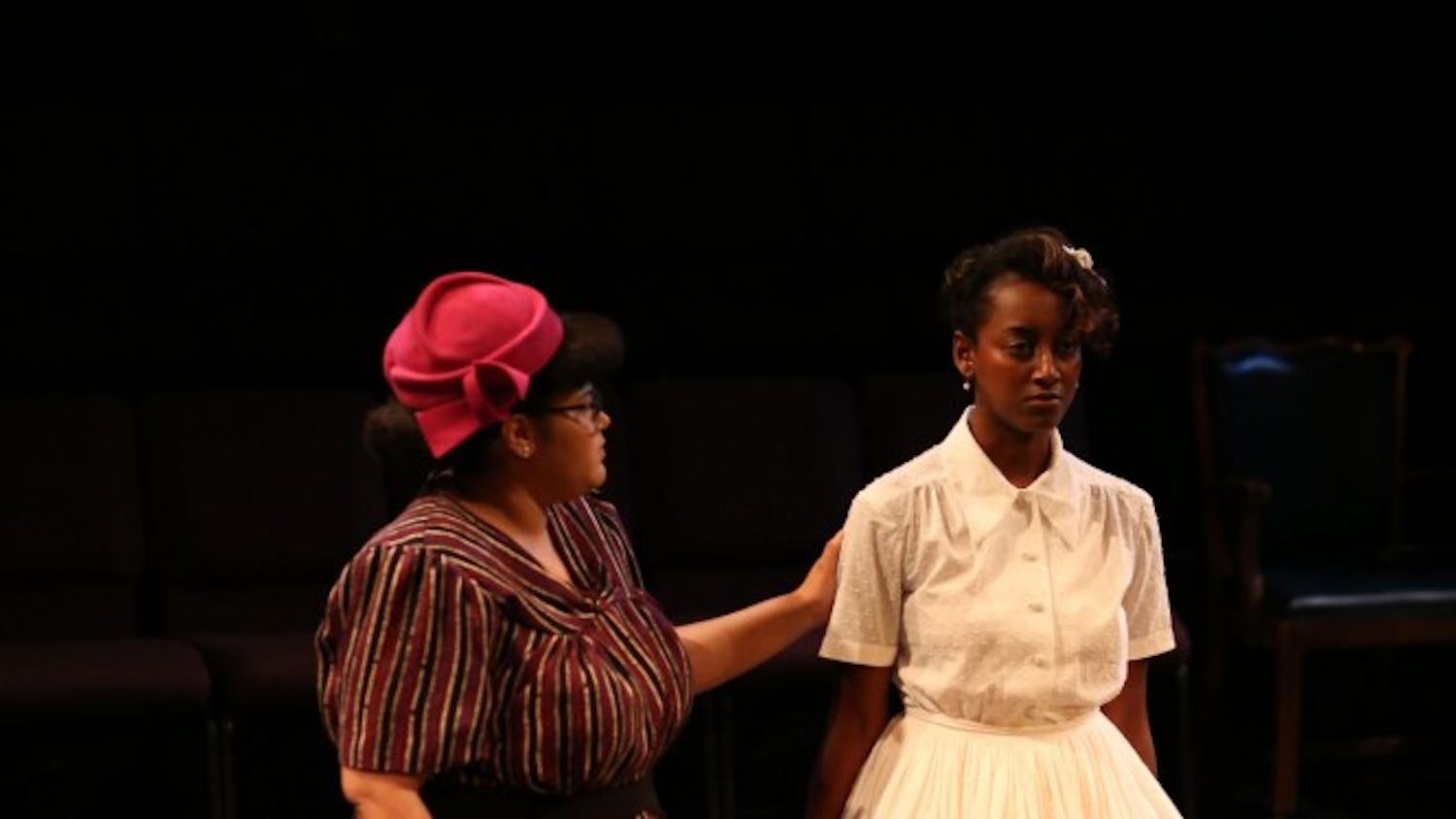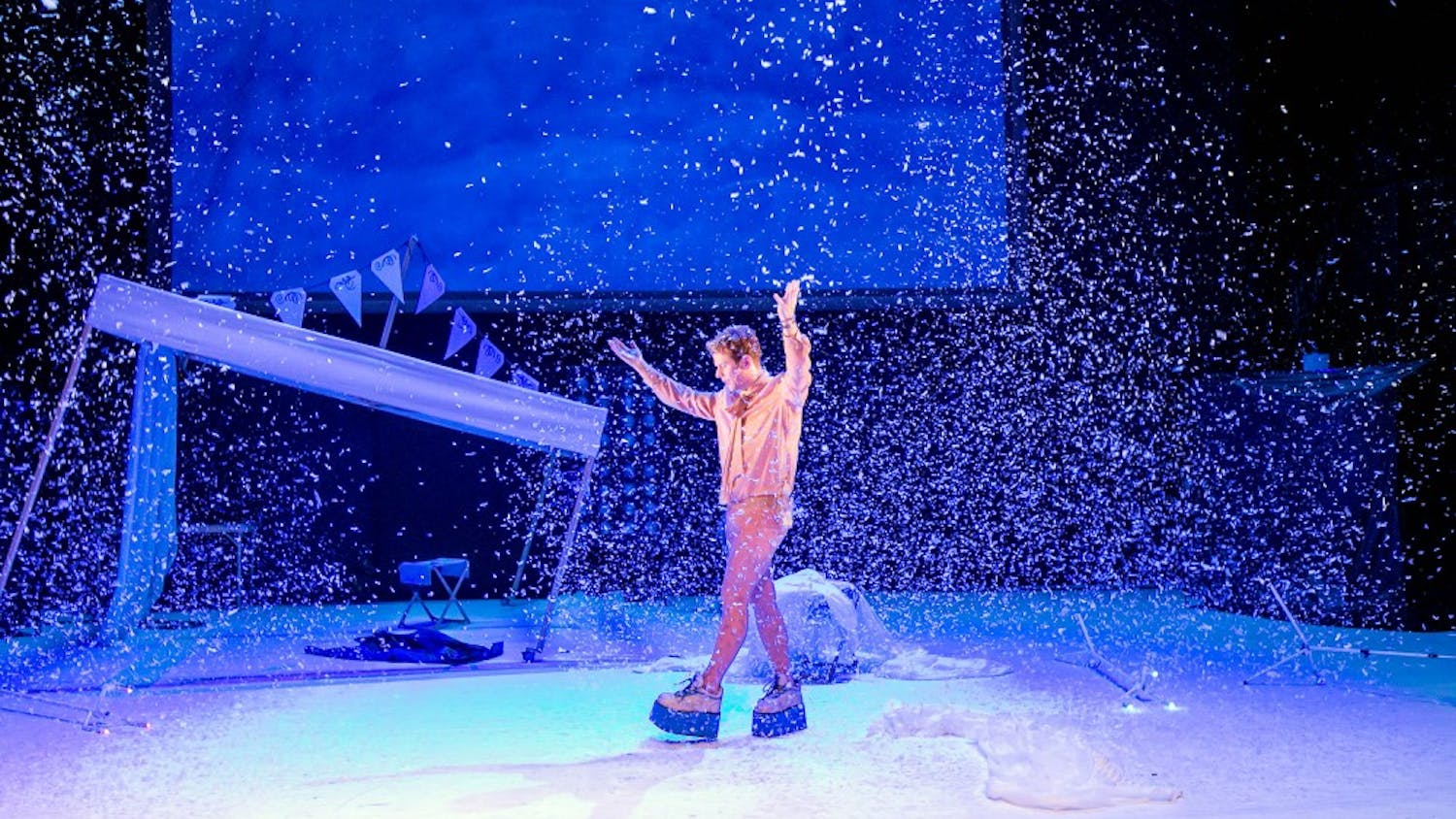At some point, every person has felt pressure to live up to some kind of expectation to fulfill a role and project an external image of ourselves to others.
Acrobats are no exception to this human experience. In his solo show, “Patinoire,” clown-acrobat Patrick Léonard breaks the illusion that circus performers are larger than life by revealing the human element behind creating an act. Léonard gives the audience an intimate glimpse into the physical and emotional challenges a performer faces when they put themselves in a vulnerable position in front of an audience. By giving us a look into his mind, he provides the audience with valuable insight into our own lives.
Last Wednesday and Thursday, Léonard performed “Patinoire” in Spaulding Auditorium at the Hopkins Center. Before Thursday’s show, Léonard anxiously paced in the lobby as audience members entered the theater. Despite the fact that Léonard has toured “Patinoire” across North America and Europe over the past five years, the naïve observer would have assumed that this was his first time on stage. With his disheveled hair and jittery mannerisms, Léonard looked terrified as he frantically checked over a list. This image was not exactly what came to mind when I had originally pictured what the co-founder of Montreal’s renowned Les 7 Doigts de la Main (The Seven Fingers) circus would look like before a show.
At the beginning of “Patinoire,” Léonard challenged my expectations by asking the audience members to leave their assigned seats and move closer towards the stage. Throughout the performance, Léonard encouraged the audience to break out of the traditional role of passive spectators. He spoke directly to audience members and at times would climb off the stage to join the audience. At one point, Léonard pulled someone on stage, handed him a pair of Chinese juggling sticks and left him there alone, looking confused. After a few moments of awkward silence, the people still sitting in the audience began to call out words of encouragement as the man slowly started to let loose and dance around the stage. The audience broke out into applause.
When Léonard returned to the stage, he proclaimed, “Even when you don’t know what you are doing, it doesn’t matter if everyone loves and supports each other.”
I thought this message was a poignant and powerful reminder that there is no shame in asking for help. Later, Léonard went on to perform many unusual feats throughout the rest of the show, such as precariously stacking audio equipment into a tall tower and climbing on top of it, but what I found to be the most compelling part of the performance was the final act.
During most of the show, the back curtain had been closed and Léonard would unexpectedly disappear behind it, leaving the audience staring blankly at an empty stage. Each time this happened, he was gone longer and longer, creating more suspense. After each pause, Léonard would return from behind the curtain as if nothing had happened, but the sense of unease never went away. Throughout the show, Léonard kept promising a spectacular final act, and when the curtain finally opened during his finale, it revealed a towering slide that reached the ceiling where he sat at the top. When he slid down the slide, the audience members gasped, shocked at the startling speed he was moving with. As he took his bows, “Y.M.C.A.” played and the audience members danced and sang along, sharing a heartfelt moment. Instead of going backstage, Léonard walked out of the theater with the audience, stopping to give people hugs along the way.
I left the theater feeling inspired. Léonard’s performance reminded me of the value in vulnerability and the resulting human connection.



